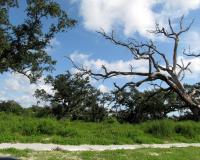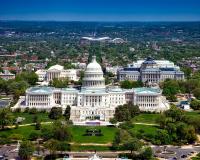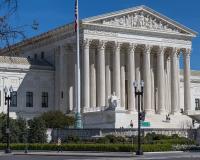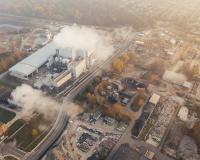
Vibrant Environment
Climate Change And Sustainability
All | Biodiversity | Climate Change and Sustainability | Environmental Justice | Governance and Rule of Law | Land Use and Natural Resources | Oceans and Coasts | Pollution Control

Clean energy technologies require a variety of minerals of varying degrees of scarcity. As a result, decarbonizing the economy will entail expansion of mineral production—not only through imaginative reuse and recycling, but also through new mines and the permits required to build those mines. Some have called for a loosening of environmental standards to address this growing need.

Managed retreat is deemed by most as a viable adaptation option to climate-related extreme weather events. Yet, the practice is controversial due to the negative impacts it can have on marginalized communities.

Passed on August 16, 2022, the Inflation Reduction Act commits nearly $370 billion in direct investment to address climate change and energy production.

Developments this past summer—including the U.S. Supreme Court’s decision in West Virginia v. EPA and the historic passage of the Inflation Reduction Act (IRA)—have dramatically reshaped the future of U.S. climate law.

Twenty-five years before Silent Spring, Rachel Carson published her first essay in The Atlantic on the wonders of ocean life. Titled “Undersea,” the piece showcased Carson’s “commitment to making the reader feel something,” reports Anelise Chen in the same magazine 85 years later.

When the pandemic started, it seemed you couldn’t turn a page or open an email without seeing “unprecedented” used in one context or another. And it was true—we were in uncharted territory, and among everything else, it was hard not to keep returning to that locution. I clearly remember sending a mass email using the word, thinking I was the first person to stumble upon this apt descriptor; little did I know how ubiquitous it would become.

The Environmental Law Institute’s 11th GreenTech webinar held on July 18, “The Role of Carbon Capture (CC) and Direct Air Capture (DAC) Technology in Our Climate Strategy,” couldn’t have been timelier. A week later, on July 27, Democratic negotiators reached an agreement with Sen. Joe Manchin (D-W. Va.) on a proposal that will invest $369.75 billion over the next decade in energy and climate programs, including billions in CC technologies.

As the national conversation following the West Virginia v. Environmental Protection Agency (EPA) verdict showed, climate change continues to be a focal point of this generation. And that conversation is happening both inside and outside the courtroom in the form of amicus briefs.

"[A] single courageous State may, if its citizens choose, serve as a laboratory; and try novel social and economic experiments without risk to the rest of the country.”
Justice Louis Brandeis wrote those words nearly a century ago, and they are particularly relevant to a set of experiments in environmental regulation now being carried out at the state level.

What events, circumstances, and perspectives have ongoing impacts on migrants’ lives, and how can we better understand the complexity of this ongoingness?